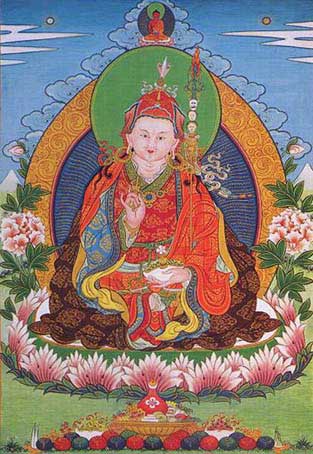History of the establishment of The Tibetan Book of the Dead can be traced back to a legend of an Indian mystic called Padma-Sambhava. It is said that he travelled to Tibet in the 8th century and introduced Buddhism for the first time to the region. However, while he was visiting there, he ‘found it necessary to conceal Sanskrit works he had arranged to be written’ (http://www.summum.us/mummification/tbotd/) because he found that the ‘Tibetans of that time were not ready for the spiritual teachings contained therein’ (ibid). Therefore, Padma-Sambhava ‘hid his texts in strange and remote locations, leaving them to be discovered at a later time when their spiritual message could be received by those with an open mind’ (ibid).
According to this legend, it would be natural to assume that the original works were written not in Tibetan but in Sanskrit. This particular language contributes to connect the alleged author of the works to India, the region he originally came from, and mystic, the occupation he was categorised, because ‘Sanskrit is the classical language of Indian and the liturgical language of Hinduism, Buddhism, and Jainism… The name Sanskrit means “refined”, “consecrated” and “sanctified”. It has always been regarded as the ‘high’ language and used mainly for religious and scientific discourse’ (http://www.omniglot.com/writing/sanskrit.htm). It is also argued that the classical form of Sanskrit is ‘the liturgical language of the Vedic religion’ (ibid) and it is ‘one of the earliest attested members of the Indo-European language family’ (ibid).
 |
| Padma-Sambhava |
For reading the text in full: http://wrex2009.wordpress.com/2011/11/23/the-tibetan-book-of-the-dead-the-establishment-of-the-work/
No comments:
Post a Comment